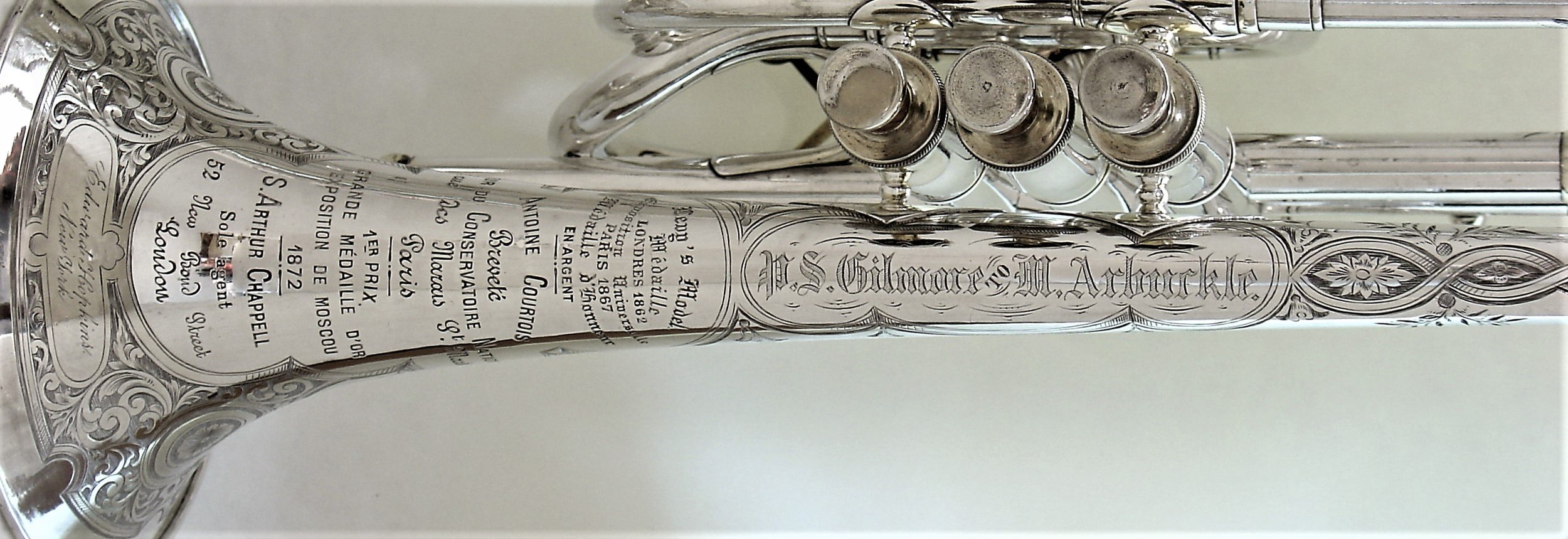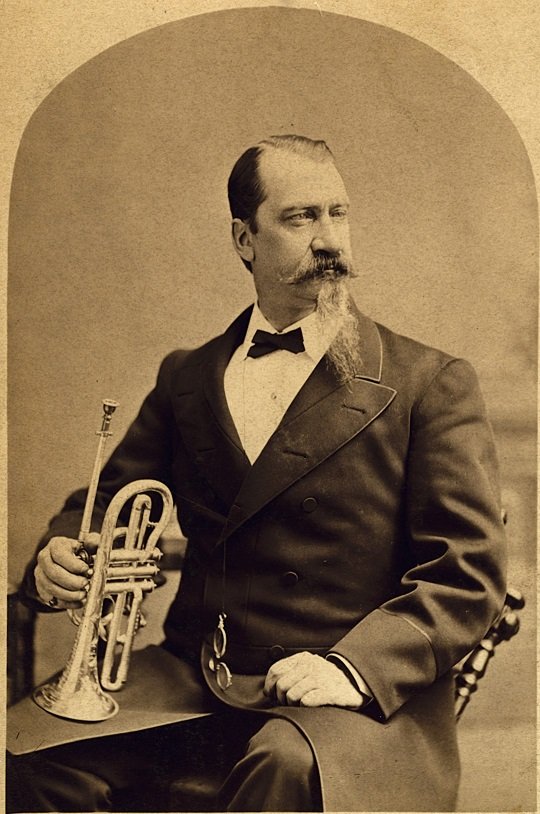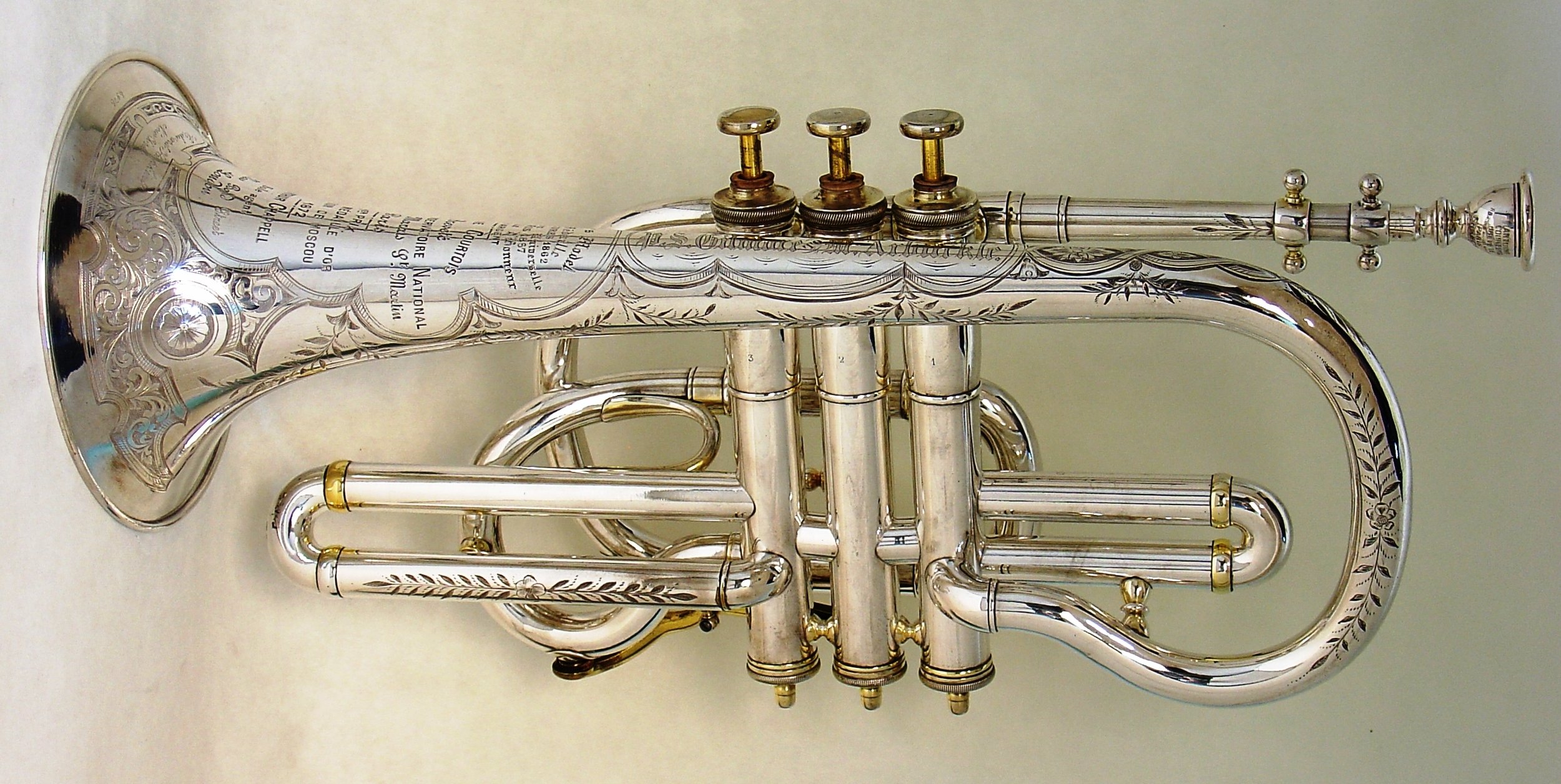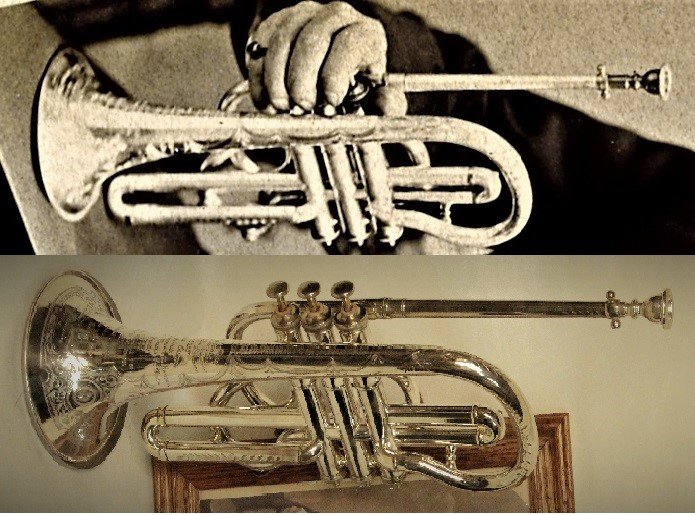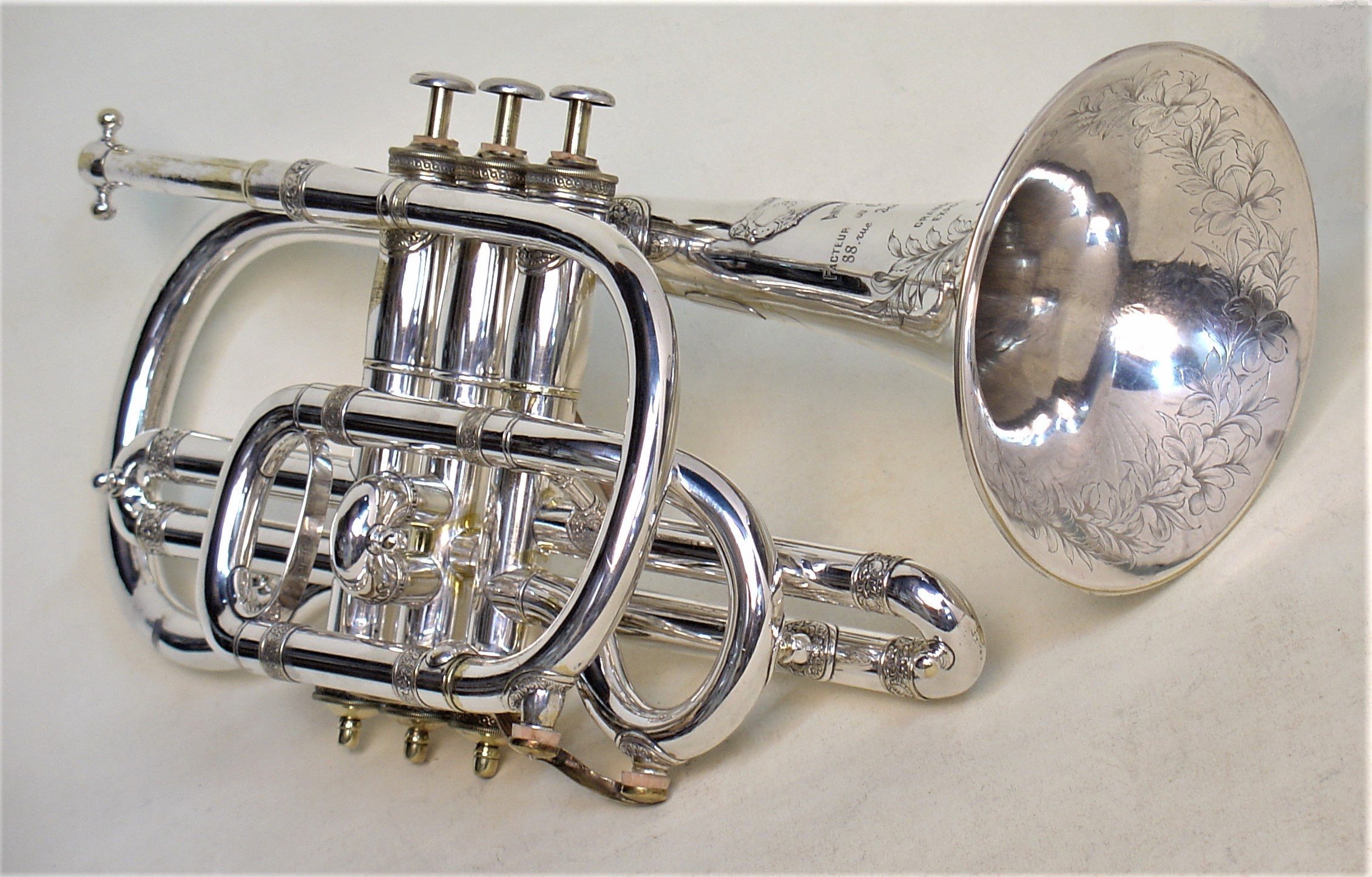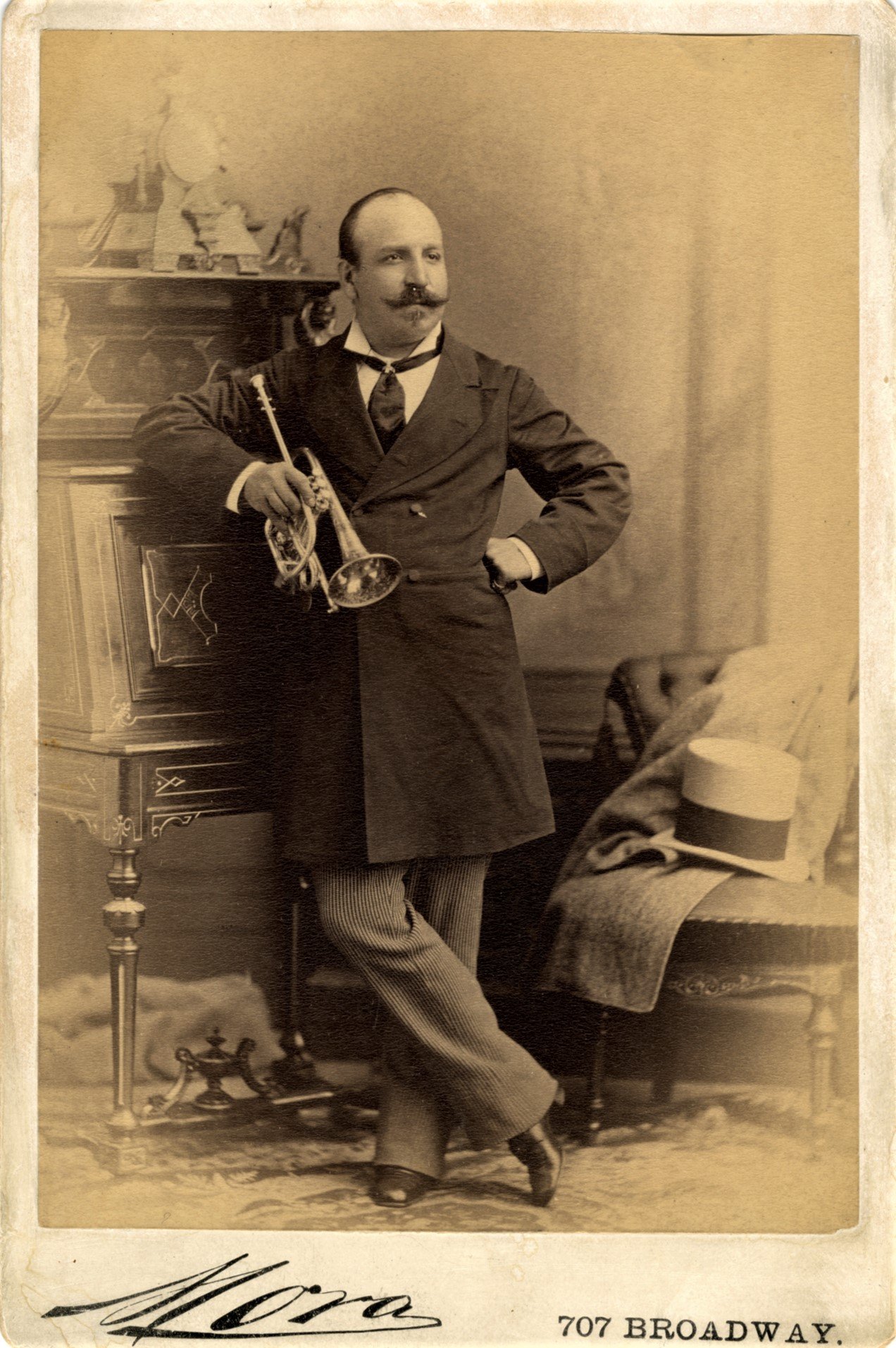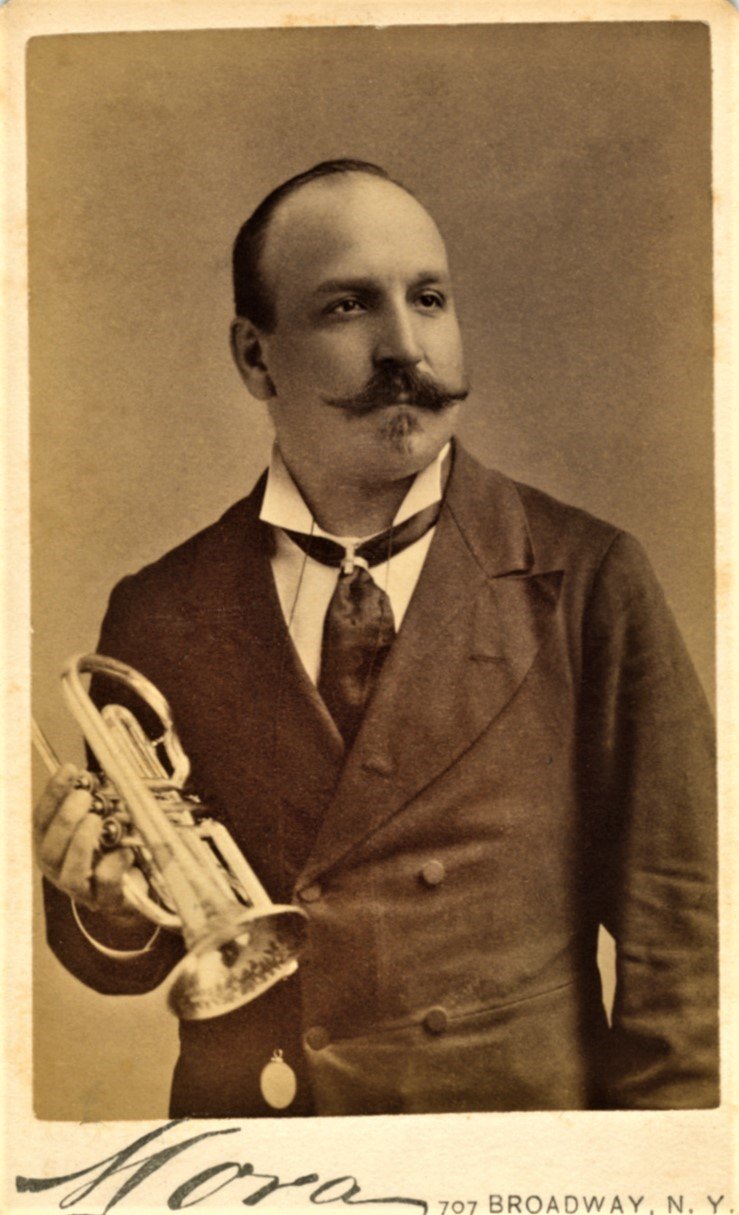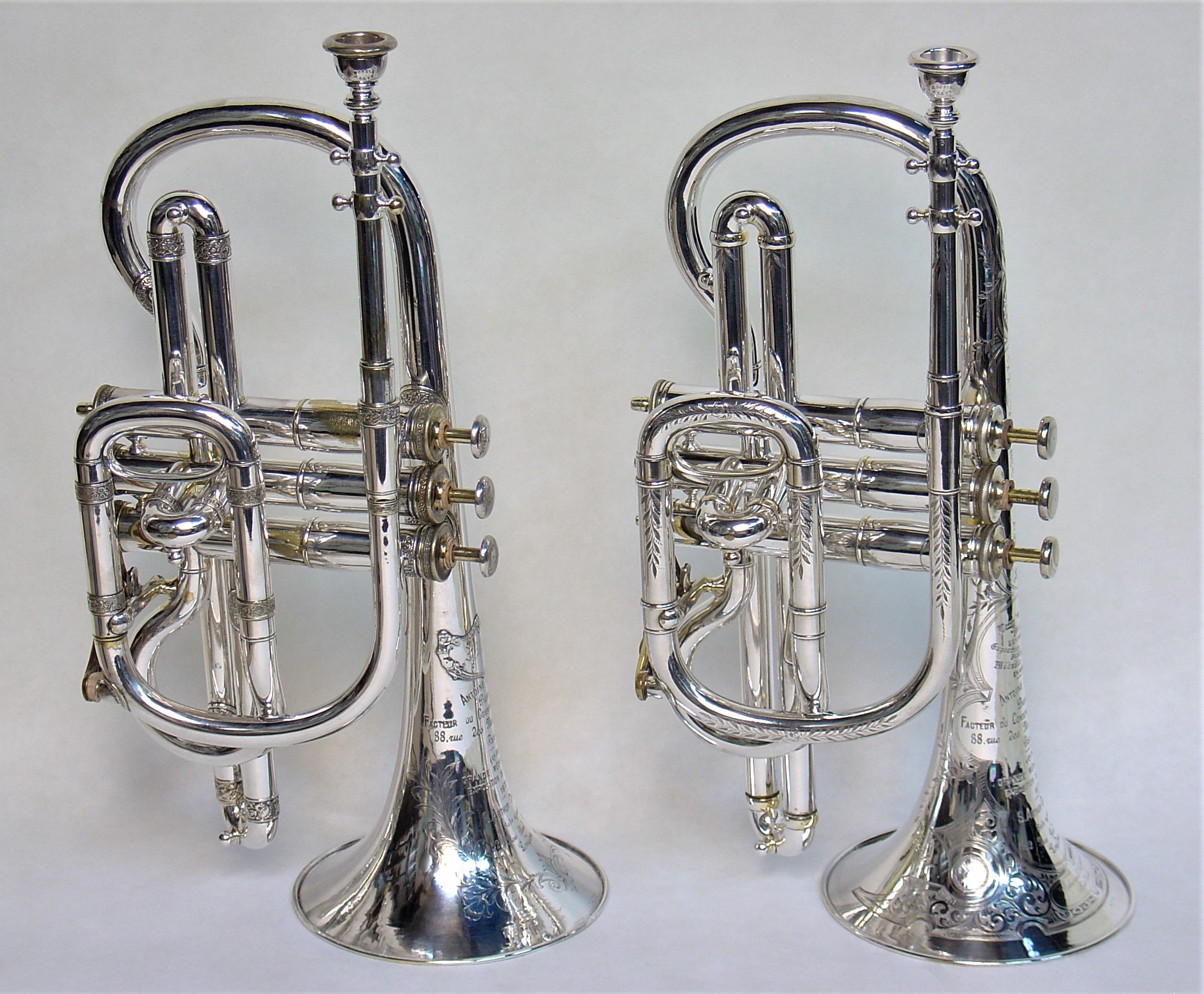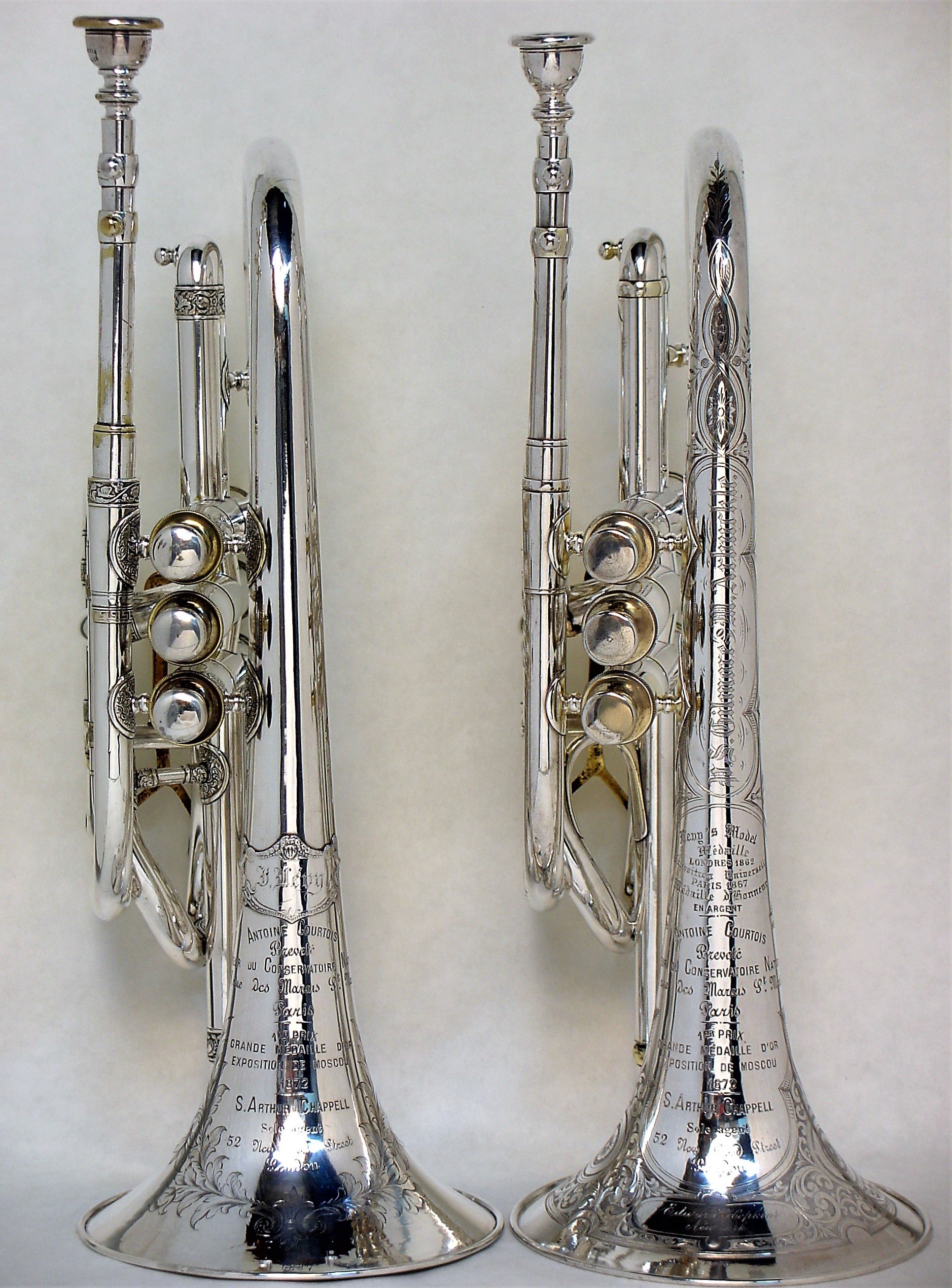Courtois Cornets of Matthew Arbuckle and Jules Levy
I’m compiling a database of all known Courtois cornets made before world war one, with serial numbers, medal dates and other data. Please email me with data from your Courtois cornets. robb@robbstewart.com
Levy’s Model Courtois cornet given to Matthew Arbuckle by Patrick Gilmore.
This very important Courtois cornet was made in Paris, about 1875 and sold through S. Arthur Chappell, the London dealer, and Edward Hopkins, the New York dealer to the most famous band leader in the US at the time, Patrick S. Gilmore, of Gilmore's Band. Gilmore paid to have it elaborately engraved, silver plated and trimmed with gold plating. He presented it to his top cornet soloist at the time: Matthew Arbuckle.
Arbuckle holding this cornet in 1876.
This portrait of Arbuckle clearly shows him holding the same cornet when it was new. The photo was taken in San Fransisco in late April, 1876 while the Gilmore Band was there on tour. Patrick Gilmore was the country's top cornet soloist in his own time, so he certainly appreciated such a fine musical instrument.
Click on photos below for larger views.
1875 was also the year that Jules Levy, the world's most famous cornet soloist, moved to New York City and was hired onto Gilmore's Band, joining Arbuckle in the cornet section. Some years later, Arbuckle gave or sold this instrument to Jules Levy. Courtois had started making “Arbuckle Model” cornets by 1876 and we can assume that he started playing that model. We can’t know how extensively it was used by Levy, but he gave it to Z. Albert Meredith in about 1900 when he was touring with him.
Meredith was another very famous cornet soloist at that time who went on to build the excellent "Meredith Open Tone" cornets and trumpets years later in Ohio. Meredith eventually moved to Long Beach California, opening a brass instrument repair shop and continued to make more cornets and trumpets in smaller numbers than in Ohio. Meredith still had Arbuckle's cornet when he sold his business, including the cornet, to Don Heaston who had been his employee for several years. He eventually closed the shop and moved the operation to his ranch in Cucamonga.
I met Don in 1976 after he had set up a repair shop at Fullerton High School, where I came to learn the trade while a senior in high school. I never learned of this cornet until about 1990 when Don asked me if I was interested in buying it. I didn't hesitate in telling him that I would if I could afford it.
The original silver plating is almost all intact, although, sadly most of the gold plated trim has worn off. Originally, the gold covered the valve caps, buttons and stems, all braces, ferrules, pull knobs, waterkey as well as all of the engraved areas. It was obviously a very striking instrument. When I received this cornet, it was in this American made Courtois case supplied by J. Howard Foote who was the sole Courtois importer in the US from 1879 to 1901. The case contained the original Bb and A shanks although the Courtois Levy Model mouthpiece and bit are replacements. The low pitch slide is probably from another cornet since it is not engraved.
1876 photo above 2016 photo.
The photos below show another extremely important cornet that was discovered in 2009 by George Foreman after many years of obscurity. This is Jules Levy's own Courtois cornet that he is holding in the last photo and I had the privilege of doing some minor repairs and preservation work on it. The original silver plated finish is largely intact. This is the cornet that Jules Levy purchased in London before moving to New York in 1875. It was an exciting thing to re-unite the two most important cornets in the United States of the 1870s that played side by side in Gilmore's Band. George is also the owner of the original photos of Matthew Arbuckle and Jules Levy and generously gave permission to display them here as well.
In photos of Arbuckle and Levy and other cornet soloists from this period, they always have the A mouthpipe shanks and high pitch slides in their cornets. It is well known that the Gilmore and Sousa's bands always played in low pitch (modern pitch or lower, at A=435Hz) for the convenience of vocal and violin soloists that wouldn't otherwise perform with bands. In about 1905, Alessandro Liberati stated that he played at A=435Hz which sounded low to me. Several instruments from that period were tested with original low pitch slides and mouthpieces and found that they could be tuned that low with the tuning slide out no more than 3/8". Playing Arbuckle's cornet with the A shank and high pitch slide in place (as in the photo above) had the same result, indicating that these two cornet soloists played at approximately that pitch level in those years. This tradition was continued into the 20th Century by Liberati and presumably others.
The overall length with mouthpiece removed is 12 7/16", the bell diameter is 4 13/16" and the bore size is .449". These are the same measurements in Levy's own cornet as well. The "Arbuckle's Model" cornet made later by Courtois appeared to be identical to "Levy's Model" but had a bore measurement of .459".

